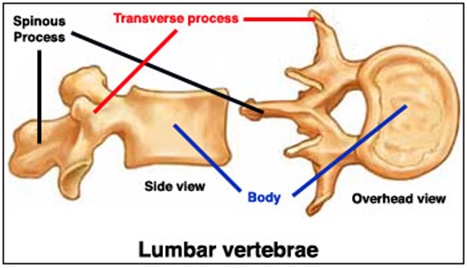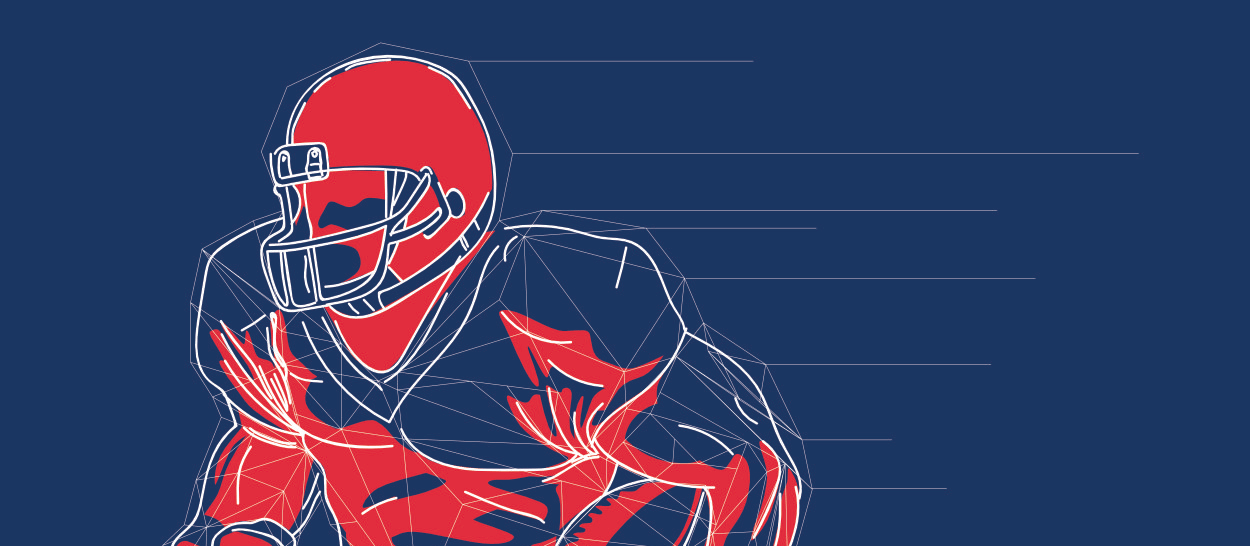This article is part of our Injury Analysis series.
The Cowboys thought they dodged a bullet when Romo lobbied to return shortly after suffering a back injury in the team's "dress rehearsal" against the Seahawks. Unfortunately, Romo's pain and discomfort lingered after the game and further testing on the area revealed a compression fracture of the L1 vertebrae of his spine.
Romo's diagnosis is extremely descriptive and provides plenty of insight into the nature of the fracture. To start, the break has been classified as a compression fracture, meaning we know how the injury occurred. On Romo's third snap of the game, Seattle's Cliff Avril hit the Dallas quarterback from behind just as he was attempting to slide. The resulting collision placed an axial compressive force through Romo's spine and forced him forward into flexion. This combination of loads put an unusually high amount of stress on his lower back, overloading the bone and causing it to break.
The injury description also informs us which segment of the spine is involved. The lumbar region starts just below the rib cage and is marked by five large vertebrae. The L1 vertebra is the first segment in this area.
Furthermore, the diagnosis confirms which part of the vertebrae is broken. Each vertebra of the spine consists of multiple bony projections and the bulk of the vertebra known as the body. The spinous and transverse processes help with movement, serve as an anchor for muscle and ligaments, and protect the area from trauma. As you will recall, Romo previously fractured
The Cowboys thought they dodged a bullet when Romo lobbied to return shortly after suffering a back injury in the team's "dress rehearsal" against the Seahawks. Unfortunately, Romo's pain and discomfort lingered after the game and further testing on the area revealed a compression fracture of the L1 vertebrae of his spine.
Romo's diagnosis is extremely descriptive and provides plenty of insight into the nature of the fracture. To start, the break has been classified as a compression fracture, meaning we know how the injury occurred. On Romo's third snap of the game, Seattle's Cliff Avril hit the Dallas quarterback from behind just as he was attempting to slide. The resulting collision placed an axial compressive force through Romo's spine and forced him forward into flexion. This combination of loads put an unusually high amount of stress on his lower back, overloading the bone and causing it to break.
The injury description also informs us which segment of the spine is involved. The lumbar region starts just below the rib cage and is marked by five large vertebrae. The L1 vertebra is the first segment in this area.
Furthermore, the diagnosis confirms which part of the vertebrae is broken. Each vertebra of the spine consists of multiple bony projections and the bulk of the vertebra known as the body. The spinous and transverse processes help with movement, serve as an anchor for muscle and ligaments, and protect the area from trauma. As you will recall, Romo previously fractured two transverse processes during the 2014 season. This time the fracture occurred to the body of the vertebrae, the area of the segments designed to bear weight and act as a platform for the intervertebral discs of the spine. Fortunately, reports suggest that the injury doesn't include any damage to the discs of the area or any neighboring ligaments.

With the damage limited to the bone, Romo will avoid surgery and instead simply has to wait for the body to naturally repair the area. Bone often takes six weeks to fully heal, a detail evident in the six- to 10-week window currently being floated around. Unfortunately that timeline is fairly broad and the rarity of the injury makes it hard to compare. Former NFL quarterback David Carr missed just three weeks with the same injury during the 2007 season but he was 28 at the time and didn't have the extensive list of previous back injuries that Romo carries. NASCAR driver Denny Hamlin missed five weeks of racing during the 2013 Sprint Cup Series with his own lumbar compression fracture, but the demands of racing and football are drastically different. As a result, fantasy owners should play it safe and anticipate an extended absence for Romo. Rookie Dak Prescott becomes the starter in Dallas and is an intriguing play based on his preseason performance and the offensive tools at his disposal.
However Prescott's long-term value remains directly linked to Romo's health, as the Cowboys persist that Romo will remain the starter when cleared to return. His latest setback isn't a career-ending injury, but questions about Romo's durability will linger. The former Pro Bowl quarterback has shown a propensity to break bones, having now fractured his clavicle (three times), back (twice), ribs (twice) and pinkie. The fractures may all be the result of playing a violent sport like football but it would be interesting to see if there is an underlying metabolic reason for the apparent fragility of Romo's bones. Regardless Romo will carry an elevated level of risk moving forward, minimizing his short and long-term value.
Turf Burns
Dez Bryant: If Romo's injury wasn't bad enough, the Cowboys top aerial option didn't play against Seattle. Bryant instead stayed in Dallas to recover from a concussion sustained in practice. He has since completed the concussion protocol and returned to practice. While he did sustain a concussion while at Oklahoma State, Bryant doesn't have a lengthy history of head injuries and should be fine moving forward. His overall value does take a bit of a hit with Romo sidelined, though he has shown signs of good chemistry with Prescott. In preseason action, Bryant has come down with a reception all four times he was targeted, including two touchdown passes from Prescott. Furthermore, Bryant's ankle and foot have held up since he returned to the field, putting him in line for a bounce back campaign.
Tyler Eifert: The Pro Bowl tight end was recently cleared to jog, giving some much-needed clarity to his injury status. Sadly, it isn't encouraging, as Eifert is targeting a return to action sometime around Weeks 4 through 6. While disappointing, the news shouldn't come as a real surprise. At the time of his ankle surgery the Bengals speculated he could miss time to start the year. Nothing about his progression hinted he was ahead of schedule and fantasy owners who gambled on Eifert's health will now need to find a reasonable fill-in to start the season.
A.J. Green: The Bengals wideout suffered a right knee injury in the team's preseason contest against the Jaguars. Fortunately, the injury appears to be a minor contusion and Green should be fine moving forward. Continue to draft him as usual.
Julio Jones: The Falcons wide receiver remains limited by an ankle sprain sustained last week. The team is downplaying the significance of the injury but they plan on holding Jones out of their final preseason game as a protective measure. Like with Green, the injury appears to be a minor inconvenience and Jones should continue to be drafted as normal.
Jordan Matthews: Matthews was an active participant in practice Monday after missing time with a knee injury. Originally identified as a sprain, the injury was actually a bone bruise to the joint. This could help explain Matthews' extended absence through training camp and the preseason, as bone bruises often take a prolonged period of time to heal. The biomechanics of the joint complicate the healing process, which prevents a quick recovery. His return to the playing field is a good indicator that he will be in the lineup Week 1 and that should move him back up draft boards.










